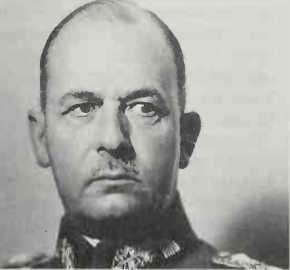Fenceless against high-altitude aircraft. However, American losses of 15 B-52s and 92 crewmen also were strategic. The impact of this operation on the negotiations is controversial, for while the North Vietnamese agreed to resume talks as Nixon demanded, they did not make further significant concessions. The operation strengthened opposition in Congress to Nixon’s war policies. WST.
Lingayen Gulf. Location of the main Japanese landings on Luzon in the northern Philippines in December 1941. The US Sixth Army also landed here on January 9 1945 during the Allied reconquest of the Philippines.
Linton, Commander John VC
(1905-43). Br. Commanding submarines HMS Pandora (1940-41) and then Turbulent in the Mediterranean, Linton had great success against Italian supply convoys to North Africa. Turbulent was sunk by Italian mtbs, February 12 1943; Linton received a posthumous VC.
Liore-et-Olivier LeO 451.B4 (French, WWII). Medium bomber; crew 4. Prototype (LeO 45) flew January 16 1937; first production aircraft March 24 1939. By June 25 1940 at least 452 completed and flown; continued in production and use with Vichy forces; a few used by Italian and German units. Limited postwar French use until September 1957. Production 584. Two l,140hp Gnome-Rhone 14N 48/49 engines; max. speed 307mph (494kph); one 20mm cannon, two 7.5mm machine guns, 4,4101b (2,000kg) bombs.
Liquid fuel. Ballistic missiles were originally powered by liquid fuel rockets using alcohol or kerosene oxidized by liquid oxygen or nitric acid. Such substances were not only often difficult to handle, but they had to be loaded into the missile just before launch and could not be kept inside the rocket for extended periods. This meant that early rockets were both operationally inflexible and vulnerable. Storable liquid fuels were therefore developed which could be kept in rockets for extended periods. The most common are dimethyl hydrazine (a compound of hydrogen and nitrogen) oxidized by dinitrogen teti’oxide (N2O,,). These are still more prone to accidents and handling problems than solid fuels, but they give higher thrust per unit weight. The USSR has kept storable liquid fuel missiles longer than the USA. even for submarine-launched missiles, sometimes with tragic results. EJG.

Field Marshal List: victor in Greece
List, Field Marshal Siegmund Wilhelm (1880-1971). Ger. One of the 12 generals promoted to Field Marshal after the fall of France in 1940, List, the son of a Wiirttem-berg doctor, served as a staff officer with various Bavarian formations on the Western Front during World War I, apart from a tour of duty in the Balkans and with Turkish forces in 1916—17. Between the wars he rose steadily in his profession, gaining a reputation as a cool and methodical soldier. List backed Hitler in the Blomberg-Fritsch crisis in 1938 and, having thereby escaped the subsequent purge, he was chosen, after the Anschluss, to establish the new Army Group 5 in Austria. In 1939 he led the Fourteenth Army, on the southern flank of the German forces, during the Polish campaign. The following year he commanded the Twelfth Army in the battle for France and won praise not only for the speed with which his infantry units reinforced the “Panzer Corridor” in the drive towards the Channel but also for his tactful handling of the brilliant but volatile commander of XIX Panzer Corps, Heinz Guderian. His performance in the operations on the Aisne in June 1940 was less distinguished, although his troops ultimately pierced the Weygand Line and outflanked the Maginot fortifications before advancing to
The Swiss frontier.
In 1941 List was sent to the Balkans where, in PY-bruary, he secured an agreement enabling Germany to attack Greece through Bulgaria. The ensuing campaign in Greece, which started on April 6, was another triumph for the Twelfth Army, with Athens falling to List’s forces three weeks later. His last major appointment was as commander of Army Group A in Russia in June 1942. He was directed by Hitler to take Rostov and then to occupy the Black Sea coast and seize the oilfields in the Caucasus, but his supply lines became overextended, slowing the offensive. His failure to achieve all his objectives precipitated his dismissal in September 1942. In 1948 a military tribunal sentenced him to life imprisonment for war crimes in the Balkans. However, he was released at the end of 1952 and lived to the age of 91. PJS.
“Little Boy” see Hiroshima, atomic
ATTACK ON.
Little Gibraltar (Hill 355). During the Korean War, Little Gibraltar overlooked the southeastern part of the Imjin salient allowing the Chinese to observe all movement in the area. On October 4 1951, it fell to the 1st Commonwealth Division and became a key position in the defences heyond the Imjin river. See also Jamestown line.
Littorio. Italian battleship. Completed 1940; damaged at Taranto, November 1940; fought in First and Second Battles of Sirte, 1941 — 42; renamed Italia before internment, 1943.
Lloyd, Air Chief Marshal Sir Hugh (1894-1972). Br. Air Commander during the siege of Malta in 1941-42.
Lloyd George, Earl (1863—1945). Br. Chancellor of the Exchequer 1908-15, Minister of Munitions 1915-16, Secretary of State for War 1916, Prime Minister 191622. As a war leader. Lloyd George’s reputation was founded upon his response to the Munitions Crisis in 1915. The military requirement for shells far exceded anything envisaged before the war and, indeed, by Kitchener, during it. As Minister of Munitions, Llovd




 World History
World History









